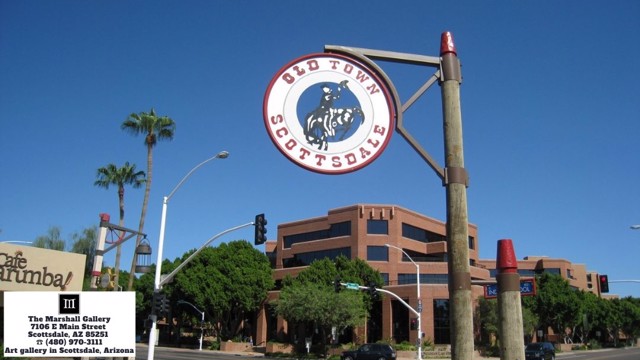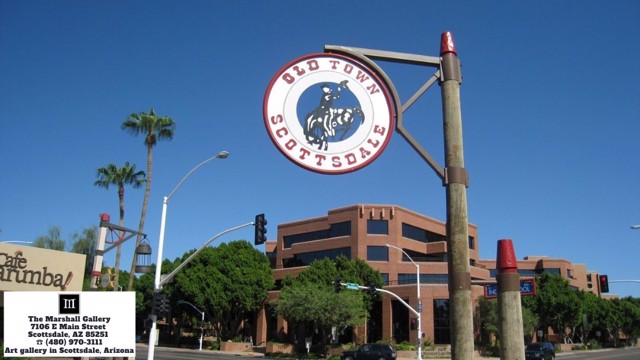Located in the Sonoran Desert, Scottsdale, AZ, is not just a city known for its luxurious resorts and arts scene; it is a place steeped in history and culture that has evolved dramatically over the decades. As I delve into the events that have shaped this city, I am reminded that every corner of Scottsdale tells a story—one that reflects the resilience and spirit of its residents.
From its humble beginnings as a small agricultural community to its current status as a premier destination for tourists and new residents, Scottsdale, AZ’s journey is filled with key milestones highlighting its growth and transformation. Join me as we explore these pivotal historical moments that have contributed to making Scottsdale what it is today.
The Early Days: Native American Heritage
Before European settlers arrived, the land now known as Scottsdale, AZ, was home to Native American tribes for thousands of years. The Hohokam people were among the first inhabitants, known for their sophisticated irrigation systems that allowed them to thrive in the arid desert environment. They cultivated crops such as corn, beans, and squash, leaving behind an impressive legacy reflected in archaeological sites throughout the region.
As I reflect on this rich heritage, it becomes clear that Scottsdale’s connection to the land runs deep. The Hohokam’s innovative farming techniques laid the groundwork for future generations to cultivate the desert landscape. This respect for nature and resourcefulness continues to be a hallmark of life in Scottsdale, reminding us of our responsibility to honor those who came before us.
The Founding of Scottsdale
Scottsdale was officially founded in 1888 by Winfield Scott, a retired U.S. Army chaplain who saw potential in the area’s fertile soil and stunning scenery. He envisioned a community where agriculture could flourish alongside a vibrant lifestyle. Scott’s vision began to take shape when he established a small settlement that attracted other settlers looking for opportunities in farming and ranching.
As I explore this period, I am struck by how Scott’s determination set the tone for what would become a thriving community. His efforts laid the foundation for Scottsdale and fostered a sense of camaraderie among early residents who shared his dream of building a prosperous town. This spirit of collaboration remains evident today as locals come together to celebrate their shared history.
Growth and Development in the 20th Century
The early 1900s marked significant growth for Scottsdale, driven by advancements in transportation and infrastructure. The arrival of the railroad in 1895 connected Scottsdale to larger markets and facilitated trade and commerce. This newfound accessibility attracted more residents and businesses, transforming it from an agricultural hub into a burgeoning town.
As I look back on this transformative era, it’s inspiring to see how innovation played a crucial role in shaping modern-day Scottsdale. The establishment of schools, churches, and businesses during this time laid the groundwork for a community that valued education and social engagement. By embracing progress while honoring their roots, residents set the stage for future generations to thrive.
The Post-War Boom
After World War II, Scottsdale experienced an unprecedented population boom as returning veterans sought new opportunities in suburban areas. This influx brought about rapid development—residential neighborhoods sprang up alongside shopping centers and recreational facilities. The city’s landscape began to change dramatically as more families moved in, drawn by its warm climate and quality of life.
This post-war era was not just about growth; it was also about redefining identity. As I reflect on this time, I can see how residents embraced their newfound status as part of a burgeoning metropolitan area while still cherishing their unique character. The balance between maintaining local traditions and welcoming new influences became essential to shaping what we now recognize as modern-day Scottsdale.
Embracing Arts and Culture
By the 1960s and 1970s, Scottsdale began establishing itself as an arts and cultural hub within Arizona. The city’s commitment to promoting local artists led to the creation of numerous galleries and art festivals that showcased both emerging talent and established artists alike. Events like the Scottsdale Arts Festival became annual highlights that drew visitors from across the state.
As I immerse myself in this vibrant cultural scene today, it’s evident that art is woven into the fabric of life in Scottsdale. This dedication to creativity not only enriches our community but also fosters connections among residents who share a passion for artistic expression. It serves as a reminder that creativity can thrive even amidst rapid growth—a testament to our collective spirit.
Tourism Takes Center Stage
The late 20th century saw tourism become a cornerstone of Scottsdale’s economy as visitors flocked to experience its natural beauty and luxurious amenities. Iconic resorts like The Phoenician opened their doors during this time, offering world-class accommodations alongside stunning golf courses and spa facilities. This shift towards hospitality transformed Scottsdale into an internationally recognized destination.
Reflecting on this era fills me with pride; it showcases how our city has successfully blended natural beauty with modern luxury while remaining true to its roots. Today’s visitors can indulge in everything from outdoor adventures to fine dining experiences—all while enjoying breathtaking desert landscapes that have captivated generations before them.
Modern-Day Scottsdale: A City With Vision
As we enter the 21st century, Scottsdale continues to evolve while preserving its unique heritage. Urban planning initiatives focus on sustainability and environmental stewardship—ensuring that future generations can enjoy all that our beautiful city has to offer without compromising its natural resources.
Moreover, I am inspired by how residents actively participate in shaping their community through local events such as farmers’ markets or cultural festivals celebrating diversity within our population. This commitment fosters inclusivity—a vital element contributing towards making Scottsdale not just a destination but also an inviting home for all who choose to settle here.
Reflecting upon my journey through history—from ancient Native American tribes through Winfield Scott’s vision—to today’s thriving metropolis, I see that it’s clear that every chapter has contributed significantly towards defining what makes Scottsdale, AZ so special. Each milestone inspires us today while reminding us about our responsibility toward preserving these legacies for future generations.
As I look at all that lies ahead for this remarkable city—whether you’re considering moving here or simply visiting—I encourage you to explore its attractions and immerse yourself in its rich history! There’s something truly magical about understanding where we come from; it deepens our appreciation for everything we have today while igniting hope for tomorrow’s possibilities within our beloved community—Scottsdale, AZ!
Sources: scottsdalehistory.org, scottsdaleaz.gov, en.wikipedia.org, themarshallgallery.com, onthisday.com
Header Image Source: themarshallgallery.com






